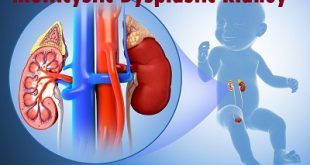Definition Septic arthritis is also commonly referred to as bacterial or infectious arthritis. It is an intensely painful infection in a joint. Bacteria, viruses, and fungi may invade the joint through various routes that cause inflammation of the synovial membrane. With the onset of inflammation, cytokines and proteases are released, …
Read More »Shin Splints – Causes, Complications and Prevention
Definition Shin splints is the common term for medial tibial stress syndrome. It refers to pain felt anywhere along the shinbone from knee to ankle. People who play sports that involve a lot of running are particularly prone to this injury. One of the most common reasons for this pain …
Read More »Kleptomania – Prevalence, Treatment and Prevention
Definition Kleptomania is a complex impulse control disorder. It is an inability to resist the urge of stealing. It is characterized by problems with emotional or behavioral self-control. People with impulse control disorder have difficulty in resisting the temptation to steal things which are generally not required or have a …
Read More »Hearing Loss – Degrees, Risk Factors and Prevention
Definition Hearing loss, or hearing impairment, is the partial or total inability to hear sounds in one or both ears. It can range from mild to profound and can be caused by factors such as age, exposure to loud noises, genetic conditions, illnesses and infections, ototoxic medications, or trauma. It …
Read More »Patellar Tendinitis – Types, Complications and Treatment
Definition Patellar tendinitis is an inflammation of the tendon that attaches the patella (kneecap) to the tibia (shin bone). The most common tendinitis about the knee is irritation of the patellar tendon. Commonly called “jumper’s knee”. This condition is commonly seen in people who play basketball, volleyball, distance running, long-jumping, …
Read More »Levator Ani Syndrome – Causes, Symptoms and Home Remedies
Definition Levator ani syndrome is a condition affecting the pelvic floor and causing pain in the rectal and perineal areas. If you think of the pelvis as a bowl, the pelvic floor is the “bottom of the bowl”, where a sling of muscles helps to elevate and provide a muscular …
Read More »Rectocele – Definition, Causes and Treatment
Definition Rectocele is a herniation (bulge) of the front wall of the rectum into the back wall of the vagina. The tissue between the rectum and the vagina is known as the rectovaginal septum and this structure can become thin and weak over time, resulting in a rectocele. When rectoceles …
Read More »Multicystic Dysplastic Kidney – Types, Causes and Treatment
What is Multicystic Dysplastic Kidney? Multicystic dysplastic kidney (MCDK) is a condition in which one or both of a baby’s kidneys do not develop normally while the baby is growing in the womb. Fluid-filled sacs, called cysts, replace normal kidney tissue and prevent the affected kidney from working. When only …
Read More » Diseases Treatments Dictionary This is complete solution to read all diseases treatments Which covers Prevention, Causes, Symptoms, Medical Terms, Drugs, Prescription, Natural Remedies with cures and Treatments. Most of the common diseases were listed in names, split with categories.
Diseases Treatments Dictionary This is complete solution to read all diseases treatments Which covers Prevention, Causes, Symptoms, Medical Terms, Drugs, Prescription, Natural Remedies with cures and Treatments. Most of the common diseases were listed in names, split with categories.








